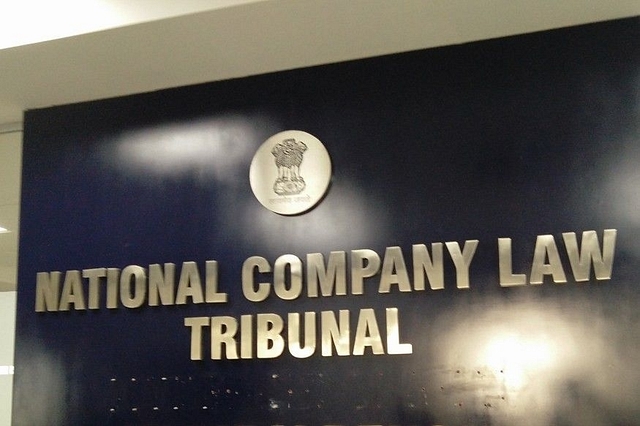
SC Order On RBI Circular Brings Focus To Core Issue: Bankers’ Fears Of CVC Witch-Hunts
The way out of the current quagmire is to build a layer of protection above bank boards so that genuine and bonafide bids to resolve bad loans can be separated from cases that may involve collusion with defaulters or corruption.
This layer can be a supervisory board whose authorisation is necessary before the CBI and CVC are sent to scour for evidence of hanky-panky.
The Supreme Court’s judgment on Tuesday (2 April), which struck down a Reserve Bank edict of February 2018 directing banks to send major unresolved default cases to the insolvency courts after 180 days, is a good thing – but also problematic. It points to something more fundamental that needs changing in the relationship between government, nationalised banks and the regulator.
The situation is the result of three realities: the government, which is the owner of public sector banks, fears political attacks from the opposition if it directs banks to resolve bad loans and take haircuts. So, it has lobbed the ball to the RBI. The central bank, for its part, cannot really tell banks which loans to resolve in what way, and thus gives general directives based on the size of the loans in default. The bankers, seeking safety from CBI and Central Vigilance Commission (CVC) investigations, are happy to not apply their minds to resolving specific cases of bad loans sensibly.
The circular, issued by the central bank on 12 February 2018, specified that stressed accounts with outstandings above Rs 2,000 crore should be resolved within 180 days, failing which banks had to compulsorily send the matter to the National Company Law Tribunal (NCLT) for a resolution.
The circular was declared ultra vires by the apex court in a case filed by defaulting power companies. Among others, Essar Power, GMR, and the Association of Power Producers moved the apex court to challenge the constitutional validity of the circular, though the order will apply to cases beyond the power sector.
The core of the issue is not the circular itself, but the convoluted way in which the government has sought to get around the problem of bankers being reluctant to move more aggressively on recognising and resolving bad debts.
Public sector bankers are afraid of writing off or resolving large loans for fear of being hauled up by the CBI or the CVC on charges of favouring businessmen. Most top public sector bankers thus let loans go from bad to worse, so that these cases don’t blow up in their faces when they are still in office.
After the Insolvency and Bankruptcy Code (IBC) was legislated and gazetted, the government empowered the Reserve Bank to direct banks to put up their cases at the NCLT by making changes to the Banking Regulations Act (section 35AA). Two lots of bad loans, involving around 40 companies and Rs 3.5 lakh crore of bad debts, were sent to the IBC on the RBI’s say-so. The 18 February 2018 circular was intended to push more such bad loans towards the IBC resolution process.
The RBI was empowered in order to put spine into bankers who were earlier reluctant to go after stressed assets and recover what they could. But the Supreme Court has now put a spanner in the works – for good reason – by saying that the RBI cannot do this in some generic and omnibus way.
The fact is that even after the Supreme Court verdict, banks can go back to the NCLT to resolve same bad loans. But they can also resolve these cases outside the NCLT. If the RBI wants to get back into the picture, it has to direct specific banks to resolve specific bad loans for clearly stated reasons. It can’t just say ‘put these 50 cases to the IBC’ without applying logic or reason.
The fundamental issue should be obvious: the problem is not the circular or how to resolve bad loans, but how to get public sector bankers to do their jobs when they are afraid of being accused of being hand-in-glove with those companies whose loans get recast as a result of the resolution process.
The IBC process and the RBI’s new powers were seen as ways to get around the problem of banks’ unwillingness to stick their necks out in resolving bad loans. In the process, we have ended up in a mindless circular, where the size of the loan rather than the fundamental viability of a project is the determining factor in going to the NCLT.
In the end, decisions on how to resolve bad loans have to be made by bankers, and not the RBI. The logical way out is to build a layer of protection above bank boards so that genuine and bonafide bids to resolve bad loans can be separated from cases that may involve collusion with defaulters or corruption. This layer can be a supervisory board whose authorisation is necessary before the CBI and CVC are sent to scour for evidence of hanky-panky. The other obvious thing to do is to start privatising banks as soon as possible after the general elections. But the protective layer, and statutory protections for bonafide actions of bankers, will be needed anyway since some banks will always remain in the public sector. Legislation to protect bankers from politically motivated witch-hunts by the CBI and CVC is vital.
The Supreme Court verdict should be used to look at this more fundamental issue. It is not just a procedural hurdle for the RBI and the government to surmount, as hinted at by Governor Shaktikanta Das and Finance Minister Arun Jaitley.